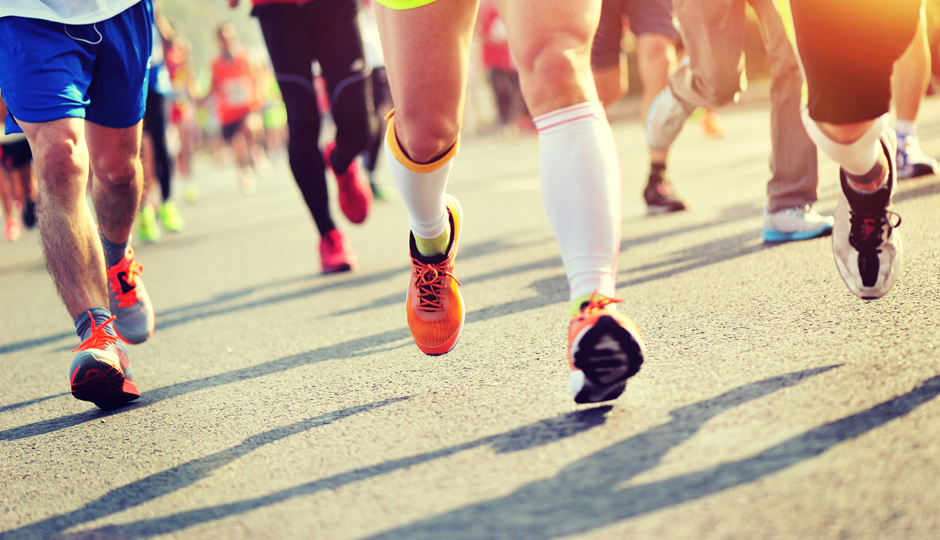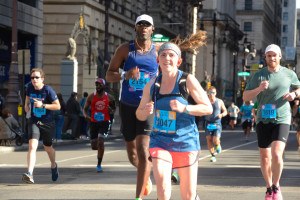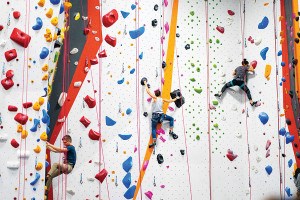Broad Street Run Training: The One Thing Every New Runner Does Wrong
Remember the old saying, “Slow and steady wins the race?” Well, when it comes to running, there’s a lot of truth to that statement. I mean, it’s true the faster runner will usually win the race — however, when it comes to day-in-day-out training, “slow and steady wins the race” is dead-on, and I’m about to explain why.
One of the biggest mistakes most beginners — and perhaps most runners — make is running too fast, too soon and/or too often. I mean, it makes sense, right? Basic logic would lead you to believe that if you run fast, you’ll get faster, and the faster and harder you run, the faster you’ll get.
I’m here to say that there’s a better (and perhaps less painful) way to train that will produce better results while lowering your chances of injury. It’s pretty simple: Slow down!
Here’s why running slower is so crucial:
1. There are certain physiological changes that occur at slower paces that won’t occur at faster paces (increase in mitochondria size and density, capillaries and oxidative enzymes, to name a few). This is an important one because these physiological changes lay the foundation for your ability to maintain faster paces and, if not addressed properly, can ultimately restrict your limits. Ever heard a runner say “I’m base building”? Well, this is a big part of building a solid base.
2. Slowing down will allow you to run longer. If you find yourself having to stop runs because you’re gasping for air, this applies to you. I cannot tell you how many new runners have come to me thinking they can only run for two miles before needing to stop. After talking to me and slowing down, they find they can run much longer. For beginners, in most cases, a 30- to 40-minute slow run is better than a 15- to 20-minute fast run.
3. Incorporating slower running is a crucial ingredient for improvement. It allows your body to recover and then adapt which ultimately makes you stronger and faster. Without slower running, you’ll violate the principle of supercompensation, the number one principle in how humans athletically improve.
4. Slowing down reduces your chances of injury. This is especially important for new runners or runners coming back from an injury. Faster running places more stress on your body. New runners haven’t built the necessary foundational musculoskeletal system in order to sustain harder paces without increased chances of injury. So slow down if you want to make it to the race.
A good rule of thumb, depending on your ability level, is that anywhere from 100 percent to 70 percent of your running should be done at a comfortable pace that you could potentially sustain for two to three times longer than your actual run. Beginners should spend 100 percent of their time running at a comfortable pace, even if it includes walking breaks. As you become more experienced, you’ll need to incorporate faster running into your training in order to see improvements, but it’s still crucial for most of your running to be done at a slower pace to allow your body to recover from the hard days. A very general and safe rule of thumb is to include two days of recovery after each hard run.
The key to slower running is to stay in what more experienced runners and coaches call an aerobic zone: a zone where most of your energy is produced using oxygen. A good way to decipher if you’re staying in the aerobic zone is using a perceived effort scale. Using a one to 10 perceived effort scale, with one being extremely easy and 10 being an all-out 40-meter sprint, staying under a four or five should keep you in the aerobic zone. To give you an indication of how hard you should be working, at a three on the perceived effort scale, breathing should be relatively easy and you should be able to complete full sentences.
So next time you’re running on Kelly Drive or Forbidden Drive, instead of trying to pass everyone and/or beat your best time for every run, slow down, take your time and have confidence that you’re still getting a good workout — promise.
……………
Cory Smith, a Philadelphia based running coach, shares his expert advice as an American Cancer Society DetermiNation running coach; founder of Run Your Personal Best, a private running-coaching business; and head cross country coach at Penn State Brandywine. He is a level two USA Track and Field-certified coach and a 4:03 miler. As a student athlete at Villanova, Cory was an NCAA Division One Regional and National Championship qualifier. Contact Cory at cory@runyourpersonalbest.com. Read all of Cory’s posts for Be Well Philly here.
Like what you’re reading? Stay in touch with Be Well Philly — here’s how:
- Like Be Well Philly on Facebook
- Follow Be Well Philly on Twitter
- Follow Be Well Philly on Pinterest
- Get the Be Well Philly Newsletter



